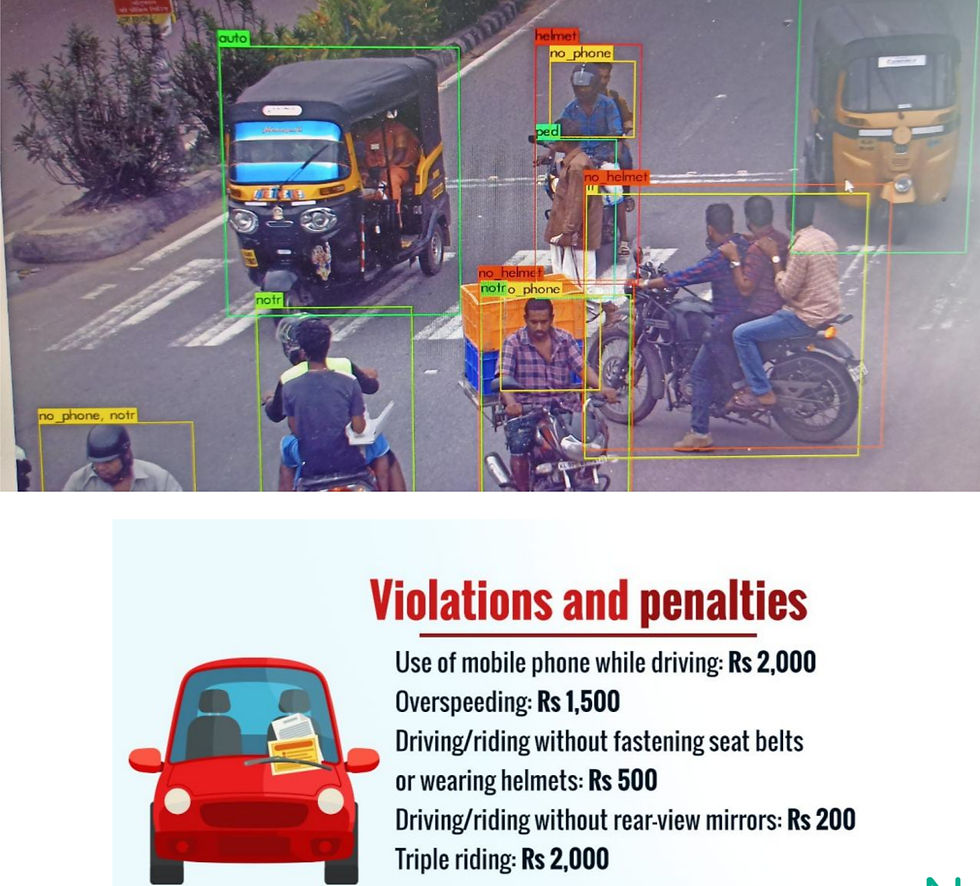Automating Order On Indian Roads
- connect2783
- May 1, 2023
- 2 min read
Updated: Jun 5
AI is taking over Indian streets, but through smart surveillance systems to reshape how traffic is monitored. From Kerala’s new automated enforcement rollout to Chandigarh’s surge in contactless challans, cities are leaning on technology to bring order to the chaos. But can intelligent systems truly manage human unpredictability? And what happens when the roads aren’t ready for the tech?

Artificial Intelligence, commonly referred to as AI, has emerged as a popular buzzword in the technology industry. The concept is increasingly being adopted by many sectors, the latest being traffic management. Last week, 726 cameras installed on the major roads across Kerala became operational.
Part of the ‘Fully Automated Traffic Enforcement System’ of the Motor Vehicle Department, the cameras focus on detecting traffic rule violations such as not wearing helmets and seat belts, overloading on bikes, using mobile phones while driving and jumping red lights. But violations will not be penalised till May 19; instead, the government is planning to conduct awareness programmes to educate the citizens regarding the new system.


The Smart City Mission has boosted the adoption of AI-powered traffic surveillance through its Integrated Traffic Management System in many Indian cities. Chandigarh’s 600 AI-powered CCTV cameras – installed in March 2022 at 40 traffic junctions – were successful in detecting the violations and issued over 2.5 lakh challans. Other smart cities, including Shimla, Madurai, Bhubaneswar, Noida and Udaipur, are also planning to set up such systems.
Evidence suggests that AI-powered traffic management can definitely help the authorities to monitor violations more precisely.
As per Bengaluru traffic police records, the percentage of contactless enforcement has increased from 38% in 2014 to 96% in 2023.
This has helped the traffic cops to focus more on managing traffic flow instead of running behind the violators. The surveillance data can also be used for identifying areas of high congestion and planning infrastructure improvements accordingly.
But the system is also associated with some challenges, such as operating them in the long run. To detect violations, the AI program needs to be trained by providing continuous video feeds of violations. In Ahmedabad, the CCTVs can only detect stop line and red light violations, as they are not trained to detect the others. Other challenges include the absence of supporting road infrastructure and the breach of privacy of the motorists.
Is your city using AI-powered technology for traffic management?
Yes
No
Comments